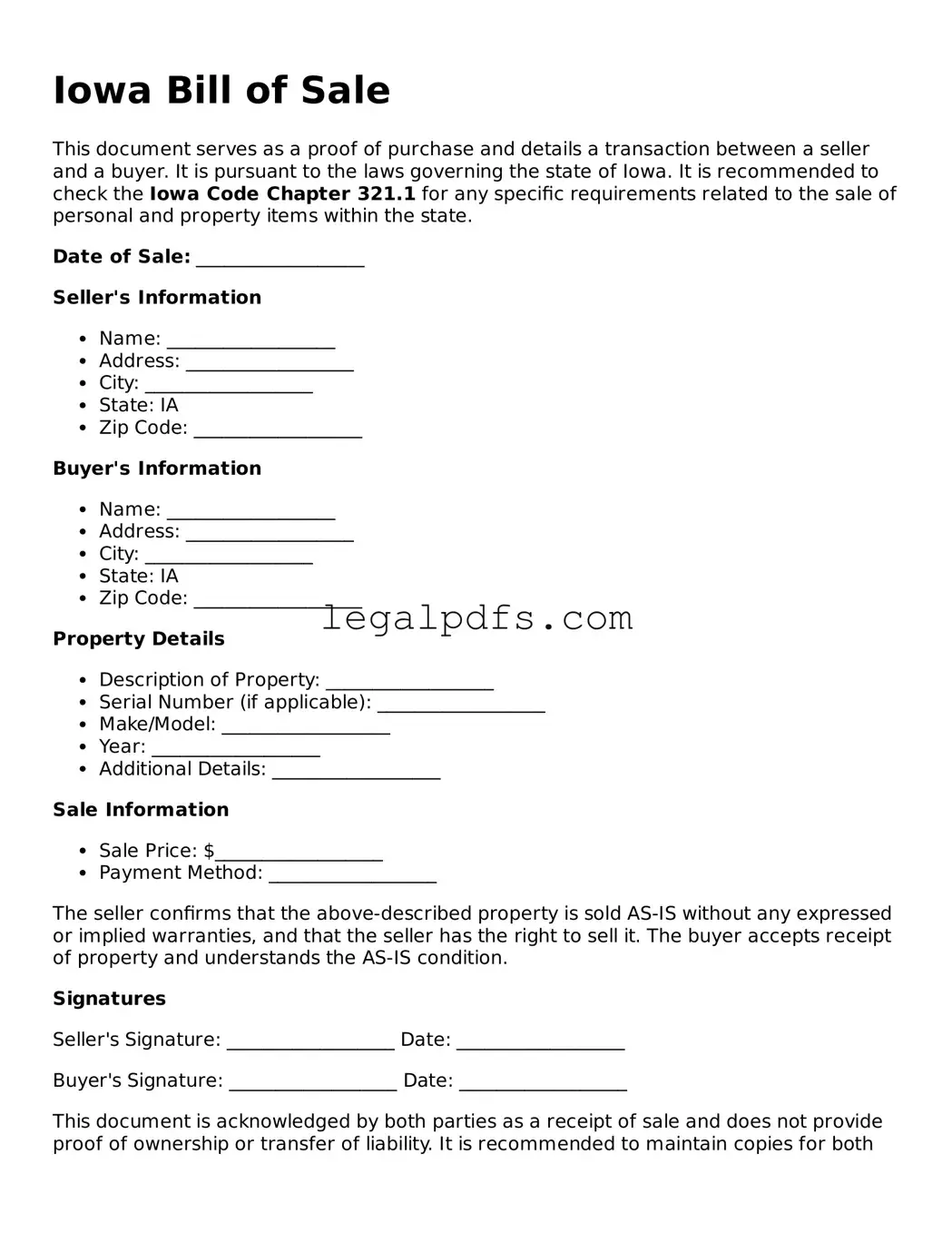Filling out the Iowa Bill of Sale form involves critical details that, if overlooked, can lead to significant issues in the future. One common mistake is not providing accurate vehicle information. This includes failing to enter the make, model, VIN (Vehicle Identification Number), and year of the vehicle correctly. Precise details are essential for the legal transfer of ownership and for registration purposes.
Another error often made is neglecting to include an accurate sale date. The sale date is important because it establishes when the legal transfer of ownership took place. Incorrect dates can cause confusion and complications, especially regarding liability for the vehicle after the sale.
People frequently omit the buyer and seller's full names and addresses. This information is vital for establishing who is involved in the transaction. It also provides a means of contact if any disputes or questions regarding the vehicle’s past ownership arise.
A significant yet common mistake is not specifying the sale price clearly. The document must reflect the total amount agreed upon by both parties. Failure to do so can lead to disputes or issues during tax reporting. The sale price should be mentioned in clear, unambiguous terms.
Not detailing the method of payment is another oversight. Whether the transaction is made in cash, check, trade, or through a payment plan, specifying this information adds clarity and formalizes the agreement terms. It’s an often-overlooked detail that can protect both parties if there’s ever a disagreement about the payment.
Failure to include an odometer disclosure statement for vehicles less than ten years old is a notable mistake. This statement verifies the mileage on the vehicle at the time of sale, which is crucial for the buyer’s protection against odometer fraud. Omitting this information can invalidate the bill of sale or lead to legal penalties.
Sometimes, sellers forget to declare whether the vehicle is being sold “as is” or with a warranty. Clarifying this in the document protects the seller from future claims about the vehicle’s condition once the sale has been finalized. This declaration offers transparency about the vehicle’s state at the time of the sale.
Not securing signatures from both the buyer and the seller on the bill of sale is a critical oversight. Signatures legally bind the document, confirming that both parties agree to the terms. This simple step is essential for the document to be considered valid and enforceable.
Last but not least, failing to make and distribute copies to all parties involved can lead to unnecessary complications. Both the buyer and the seller should keep a copy of the bill of sale for their records. These copies serve as proof of transfer and can be crucial for registration, taxation, and personal record-keeping.
